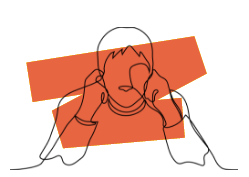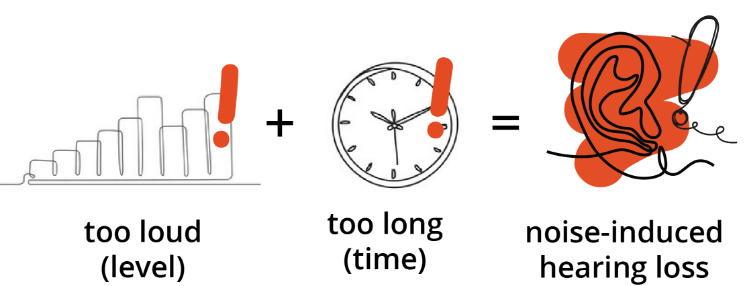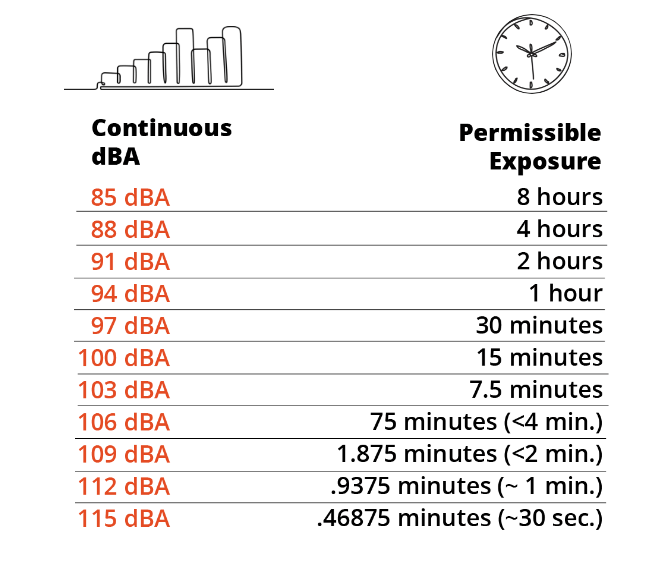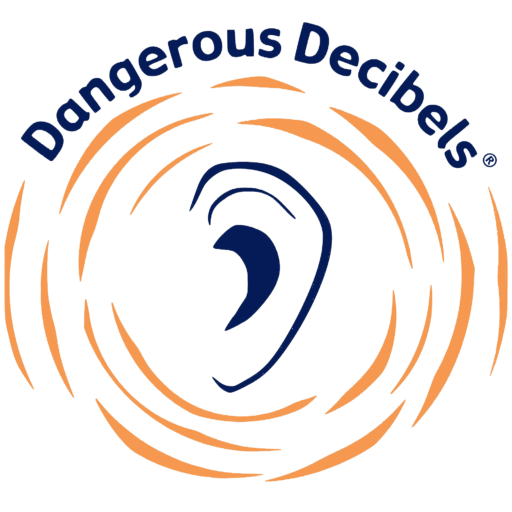Safe or Dangerous: 1. How Loud is Too Loud

1How Loud is Too Loud?
Risky Listening
Whether your ears are at risk of damage from loud sounds depends on TWO things: the decibel level of the sound and how much time you are listening to the sound.

Whether a sound is considered SAFE or DANGEROUS is simply stated by listing the decibel level (dBA) and the allowable listening time (minutes/hours). 85 dBA is the level we reference for adults. For children, it is likely lower at 75-80 dBA, but no one knows for sure.

Remember:
- dB SPL = decibels sound pressure level
- dBA = decibels sound pressure level measured with A-weighted filtering which shapes the sound to match the hearing sensitivity of the human ear. So, the meter “hears” like we do!

Each row on the exposure table above represents the SAME AMOUNT of allowable noise exposure or 100% daily dose for adults. So, mowing your lawn without hearing protection at 88 dBA for 4 hours has the same equivalent risk of damaging your ears as listening to a chainsaw without hearing protection (115 dBA) for less than 30 seconds!
Repeated unprotected exposures above these levels puts a person at risk of developing noise-induced hearing loss. The hearing loss won’t occur after a one-time exposure at these levels, but the damage to our ears will accumulate over our lifespan.

Sometimes a single brief extremely high level sound above 120-140 dB peak sound pressure level may cause instantaneous damage to our ears if the listener is not wearing hearing protection. An example of this type of sound is a firecracker exploding nearby.
1. How Loud is Too Loud?
Quiz
